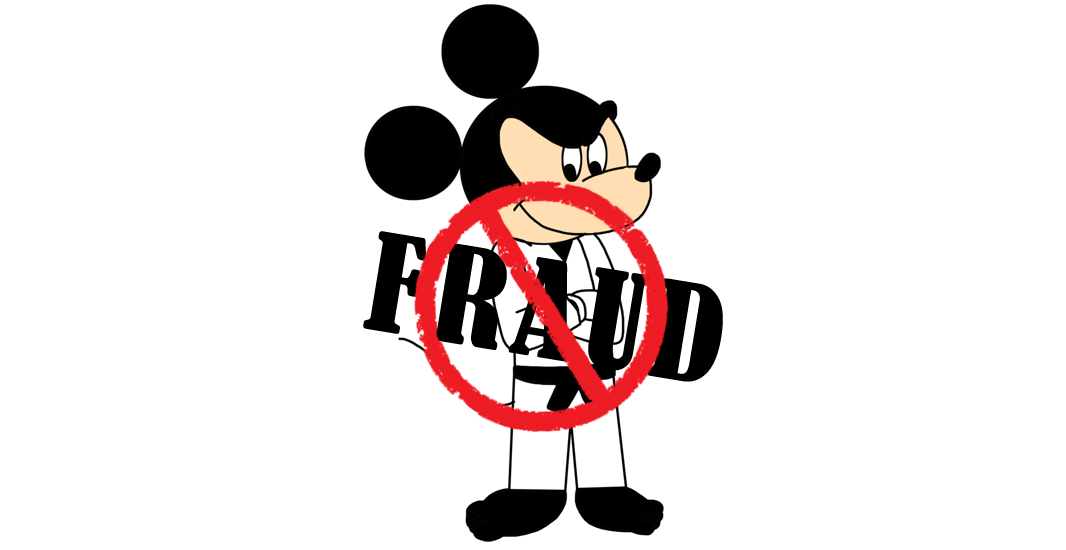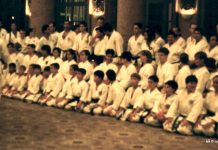by Christian Whitney ~ This is a controversial issue. Many websites on the Internet have articles regarding how best to spot a fraudulent instructor. A large percentage of these articles are written by people with a long history in martial sports and in competition. Many of these authors leave out important criteria in determining “legitimate” or “non-legitimate” martial arts instructors and they place all newer martial arts in the same “bad” category. This is very discriminating to these new legitimate arts because not all Founders of newer styles are frauds.
In the last two decades there has been an increase in the creation of Martial Sport and Martial Art styles. Specifically, but not limited to, new styles with a Korean background (including weaponry), ‘Combat’ styles and dozens of Martial sports styles. Many of these styles have been formed by people in their early 20’s with little Martial arts experience. Often these people claim ranks and titles they have not earned.
It appears that many of these so called Founders claim rank titles only for the purpose of outdoing the competition and/or to feed their egos or to make more money. This makes it vitally important that people examine the credentials of the founder of the style. This includes their years of experience, styles and ranks achieved in the arts they have trained in, reasons for style formation and their personal character.
Below are areas that should raise concern. They are to be used to assist one in determining if an instructor in question is really a con-artist and fraud or a legitimate instructor.
- On the school’s website and print advertising if certain words are used repeatedly such as, World Champion, world’s best, Great Grandmaster, Soke, Professor etc. this should be looked at as ego driven advertising.
- If the style summery and instructor biography explains how the Art was founded by blending other sports together. Martial sports produce and encourage huge egos and the violent “I am better then everyone else” personality. The need to be in the spotlight and seen as better than everyone else is a large part of the reason they created the new style. Martial arts don’t produce egos but rather encourage the opposite, the losing of ones ego. The likelihood of a Martial Sport fraud is much greater, since competition and the need to be the best is of the utmost importance in Martial Sports. (Often you hear sport fighters quoted as saying “I will go down in history” when they win). Self glorification is part of Martial sports.
- An instructor claiming that all “Martial Arts” schools that teach inner development, philosophy, meditation and Chi energy are cults. All true Masters in the Martial arts know that this is part of the Martial essence. Thus any legitimate Master would never make such a comment.
- One should look twice at the instructors profile if the name of the new style has the word “combat” in it. Also, if the name of the school has the words “Martial Arts” as part of the name, but they teach sport arts. Often this is an attempt to please the masses.
- Most importantly, if the style was founded with less then 30 years of dedicated practice and research in the Martial Arts or if the founder is in his 20’s, it’s most likely a fraud. To be the founder of a Martial Arts style is not simply tossing a coin and having a few years of experience. It requires adequate knowledge, depth, insight and many years of previous teaching experience as well. The average time of dedicated experience in the earlier styles created in the 20th century was approximately 30 years, with the exception of Bruce Lee’s Jun Fan Gung Fu.
- If there is very little information about the instructor, style or class fees on their website. (A lack of information is often a marketing ploy to get people to call so a “used car salesman” approach can be used to get them to come to the school where a contract can be sold).
- If they can’t make up their mind and claim to teach both “Art” and “Sport” to appease potential students. Often this shows what is truly in the instructor’s heart, pleasing the market and not teaching his art. These schools often go after fads to please the masses. They have no true essence, but change for financial gain. Today they teach Martial sport and tomorrow its Martial Arts. The ups and downs of the business market are followed, going with and claiming to teach whatever the next fad will be. Mockery of certain aspects of the Martial Arts one day and teaching those same aspects only when the public interest is there. They are not true to themselves, how can they be true to their students or teach those students with a life long commitment?
- Lastly, look at how the instructor carries himself, treats others and his students in the school and in society. Is there benevolence and sincerity? Or is there ego, profanity and violence?
- After going through all the above criteria for determining a fraud from a legitimate instructor, one should also review the additional red flags below. If the instructor you are thinking about studying with has passed the red flags above without concern, the criteria below should help you determine if the person is legitimate.
- Does the instructor insist that students call him Grandmaster, Soke, Great Grandmaster or professor? Does he mind if you call him Master or Sensei instead? Insistence on calling him Grandmaster or another high title other then Master or Sensei proves an enlarged ego and most likely a fraud. It should work the opposite, as the instructor should tell students to address him as Master or Sensei. Remembering that an instructor is your teacher regardless of being a Founder, so Master or Sensei should be perfectly acceptable. An ultra casual “Hi Fred” is not an acceptable way to address a traditional martial arts instructor in a disciplined school either. (Factually all Founders are considered Grandmaster and 10th dan regardless of what title they choose to use). The founding title is more for the record and a formality. If one insists on using the title in daily teaching it would show an enlarged ego).
- Does the instructor make you bow to him only and not return the bow? Bowing is a show of respect for one another and your training hall (school). The instructor should always bow with the students.
- Will the instructor help potential students find a Martial Arts school even if they can’t come to him for lessons due to distance? Or will he simply insist that you come to him, tell you he’s sorry he can’t help and not assist you in the least with finding a good Martial Arts school?
- Is the instructor obsessed with greed or does he have many discounts to help a student if their financial situation was problematic? Is he in it only for financial gain? Offering FREE classes does not mean the instructor teaches with integrity.
- Most important question – Is the instructor Mushotoku*?
* Mushotoku is total abandonment of self, thoughts, goals and desire for profit – the whole mental structure that is the foundation for the development of the ego. True compassion is this abandonment. - Does the instructor have a franchise with other schools or is he a single school owner? If he has other schools it would show fast high ranking promotions to have one instruct for him to increase his revenue. Although an instructor with a long history may have 2 schools, we are discussing the criteria for new style legitimacy that includes fast student promotions to instructor status for financial gain, not to be confused with any senior Martial arts instructors with 2 schools.
- What was the reason for creating the new style? Why was it founded? What is the new styles philosophy?
These questions will assist one in determining the legitimacy of a true Martial arts instructor or founder or one that is a con-artist looking for only financial gain and a throne to rule from.
If every founder of a new style was a fraud we would be labeling the following past masters of the last 50 years as frauds. This would be a disgrace to do.
- 1942 Aikido – Morihei Ueshiba
- 1955 TaeKwonDo – Choi Hong Hi
- 1956 American Kenpo – Ed Parker
- 1956 Isshinryu – Tatsuo Shimabuku
- 1967 Jun Fan Gung Fu (way) – Bruce Lee
- 1990 Chun Kuk Do – Chuck Norris
This is only to name a few of the most commonly known legitimate styles from that time period.
We must ask the above questions to clearly distinguish and determine fraud from legitimate founder.
It is very easy for people to be misled by insincere, fraudulent instructors, but just as easy to discredit a newer legitiment Martial Art. Use the checklist and you will be lead in the proper direction.
About The Author
Master Christian Whitney has over 32 years experience in the Martial Arts, is founder of Genshinryu and has been training in the Martial arts since 1975. He has been teaching Martial Arts for the last 20 years mostly on a part time basis and has held other positions in marketing or in the corporate environment over this time.
Author’s websites:
MartialArtsEnlightenment.com











